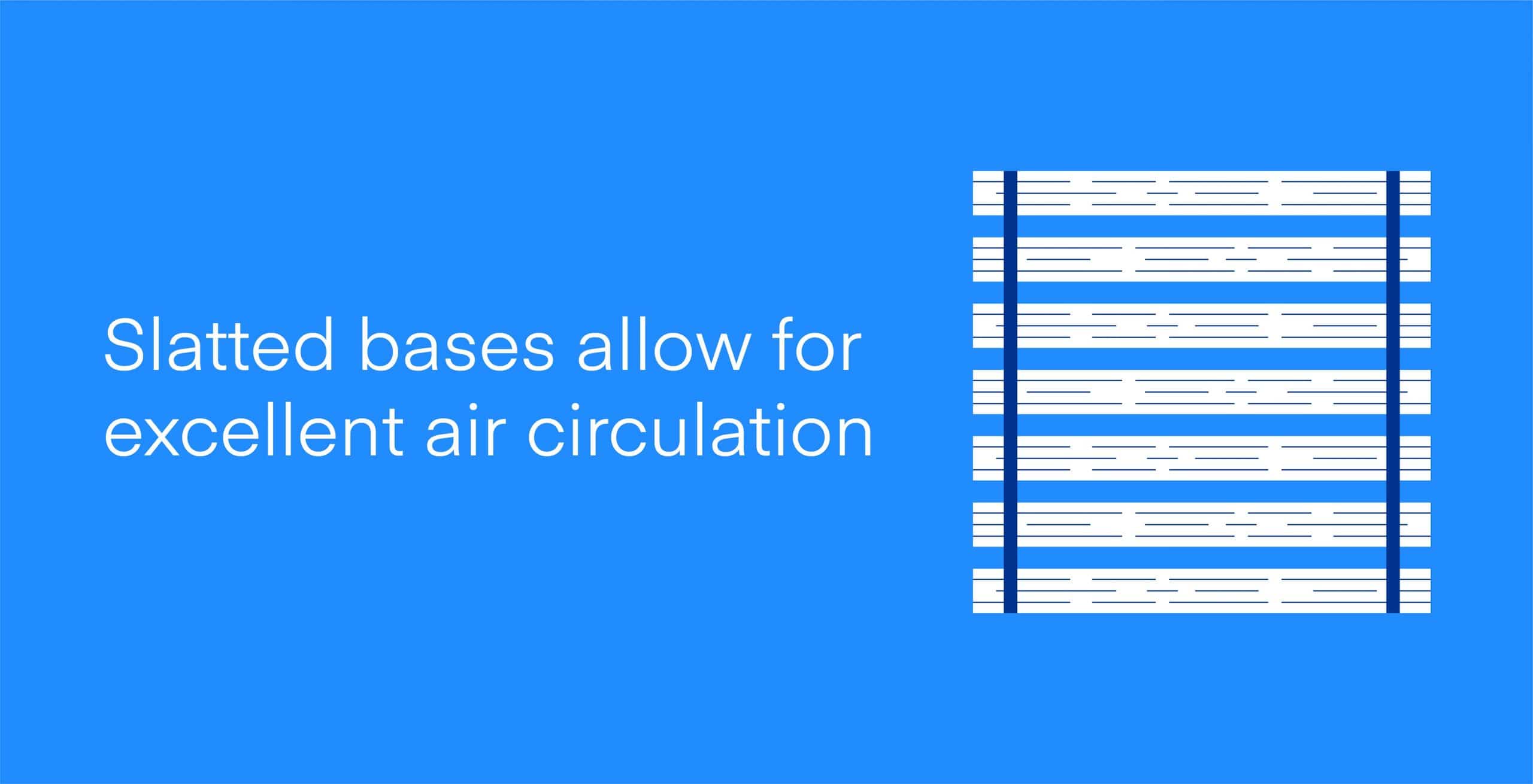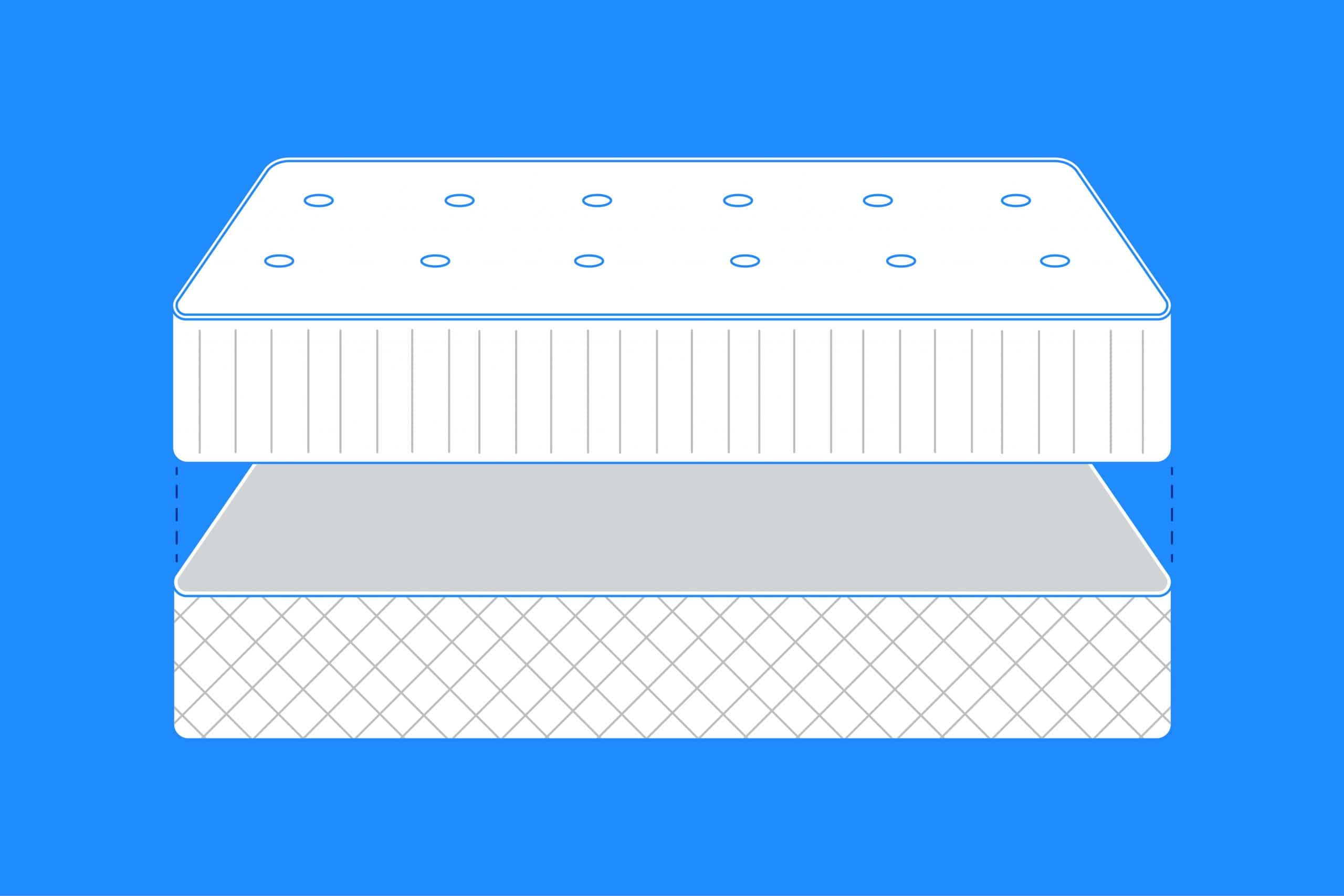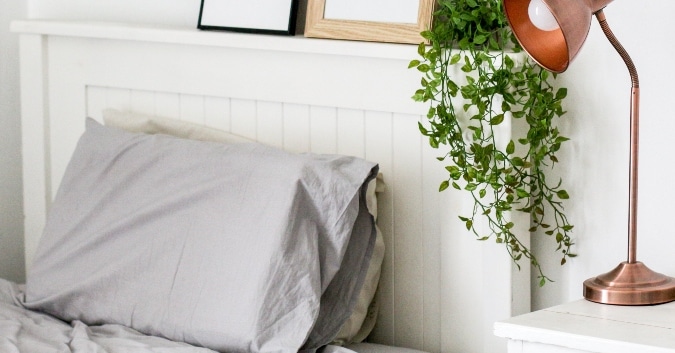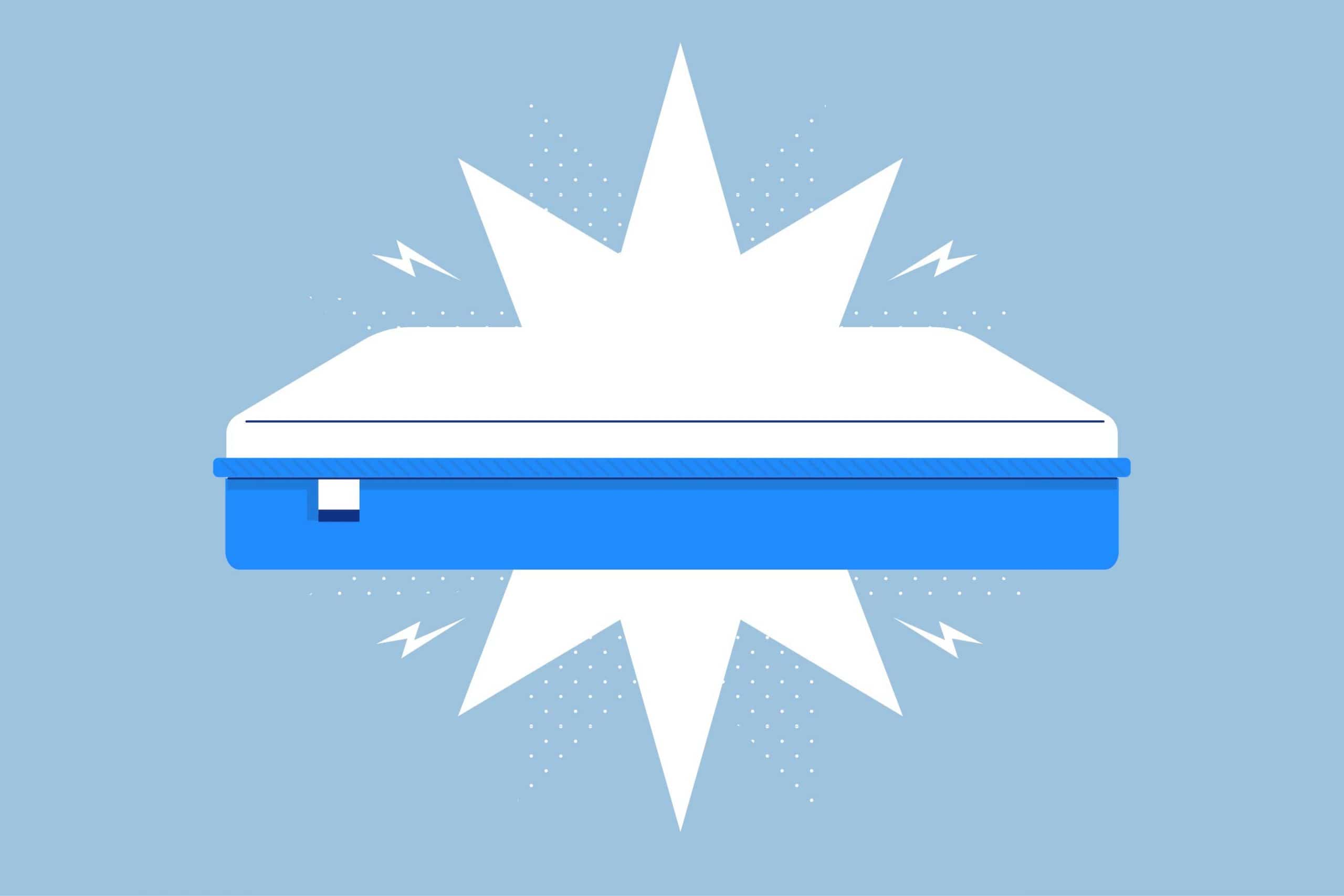You’ve just invested in a new high-quality mattress, and now you need a place to put it that will last just as long as the mattress does. The best foundation for your mattress largely depends on the type of mattress, and one of the most common places people put their new bed is on a box spring. Innerspring beds go hand in hand with box spring foundations, but what about other mattress types? Do you always need to use a box spring? And when is it a bad idea to use a box spring? We’ll answer these questions and more in our article.
Why You Need a Mattress Foundation
It’s tempting (and cost-effective!) to put your new mattress on the ground; no need to buy an extra bed frame, foundation, or box spring, right? While it’s true you can technically put your mattress anywhere, including the floor, an incompatible foundation can decrease your mattress’s lifespan or even damage it. Some companies specify the exact type of foundation you should use in their mattress warranty, because using the wrong one can void your warranty protections.
Additionally, mattresses aren’t universally compatible. For example, a memory foam mattress sitting on the floor could experience restricted airflow, leading you to wake up overheated and uncomfortable. That’s why most brands recommend using their memory foam beds on a platform bed or one with slats no more than 3 inches apart (to prevent sagging). On the other hand, innerspring beds must be used with a box spring to prevent sags.
A good mattress foundation can pull together the aesthetics of your bedroom, too, so it’s worth finding a high-quality one that also extends the life of your mattress.
What is a box spring?
Box springs are not the only foundation out there, but they are still one of the most popular bed bases because they go with innersprings, which are in turn one of the most popular mattress types. In fact, you cannot even use an innerspring coil mattress without a box spring.
Box springs sit on top of a metal frame. They’re usually made of wood and covered in fabric. This solid base is meant to absorb the bounce of innerspring coils; essentially, it acts as a shock absorber. The hollow inside of a box spring also increases airflow through a mattress, which is a plus for those who struggle to sleep cool.
Do I need a box spring?
The main benefits of a box spring include better airflow and shock absorbency. Box springs also allow the user to elevate their mattress even higher above the floor, creating more storage space under the bed.
Despite the extra support from box springs, innerspring beds still have the least amount of pressure relief compared to other mattress types. Innerspring users report sagging within 5 years of buying their mattress, indicating that a box spring may not be the most useful foundation for a mattress.
Whether or not you need a box spring really depends on your mattress. Like we mentioned before, innerspring mattresses typically require a box spring. However, modern innerspring models can potentially be used with other foundations—check the mattress warranty on the company’s website for further specifications.
| Mattress Type | Foundation |
|---|---|
| Innerspring | Box spring, metal frame, bunkie board |
| Memory Foam | Platform bed, slatted bed frame, adjustable base |
| Hybrid | Platform bed, slatted bed frame, adjustable base |
| Latex | Platform bed, slatted bed frame, adjustable base |
As you can see, most other mattress types do not require a box spring. In fact, most of them shouldn’t be used with a box spring, as it can damage the mattress materials or cause premature sagging.
Beds with coil bases, such as innersprings and hybrid mattresses, are naturally cooler than latex or memory foam thanks to their structure. However, beds with springs typically have issues with pressure relief and sagging. Thankfully, modern foam mattresses are made with cooling materials, such as gel memory foam, graphite infused foam, or open-cell foam.
Other foundation types
A mattress foundation is all about support. You may have back pain and need an adjustable base, or your body weight could be on the heavier side and you’ll need extra support. Review all of the options available to you to get the best night’s sleep.
Platform beds
Platform beds are solid pieces of wood or other materials. They add height to the mattress but do not leave any room under the bed for extra storage space. Platform beds are a sleek, simple way to complement your mattress. However, they don’t allow for much airflow, so keep that in mind if you sleep hot.
Slatted bases

Slatted bases are typically made of wood or metal and they get their name from the spaced-out wooden slats that support the mattress. Some slats come separate from the bed frame and you have to fasten them in place with Velcro or snaps.
Slats allow for excellent air circulation, but take care not to choose slats with large space in between. If you’re using them with a foam mattress, the slats should be no more than 3 inches apart to avoid any sagging or damage.
Metal bed frame
Metal frames go with box springs or you can use them on their own. They are one of the most inexpensive foundation types, but they’re also not as durable or aesthetically pleasing.
If you want to use a metal frame, pay attention to the type; some of them come with slats, which make them compatible with foam or hybrid beds. Others do not have any slats, and you must use those with a box spring on top.
Bunkie boards
Bunkie boards are similar to box springs. Both are made of wood, but a bunkie board is a solid piece of wood covered with a piece of fabric, so some consider bunkie boards to be a sturdier alternative to box springs. Because they are just one solid piece of wood, they’re often cheaper than box springs, too.
Unlike box springs, bunkie boards do not add any extra height to a mattress because they are just a thin piece of plywood or particleboard. This makes them a good space saver, but if you don’t like the look of a low-profile bed, you might be better off with a box spring or other foundation type.
Adjustable bases
Adjustable bed bases were once considered a luxury item, only available for those who needed in-home medical care. Now you can find adjustable bases easily, and many mattress companies even offer adjustable bed and mattress packages at a discounted price.
Adjustable bases plug into your wall and are operated with a remote. You can use most mattresses with an adjustable base, but innerspring beds may not be compatible with all adjustable base models because the springs do not bend or fold easily.
You can elevate your legs and head with an adjustable base, which can help with circulation, restless leg syndrome, numbness, snoring, sleep apnea, lower back pain, and more. Another plus of adjustable beds is that they work well with split queen or split king beds, allowing each person in the bed to customize their comfort level.
Unlike wooden frames, adjustable beds are not as aesthetically pleasing. They’re also loud and cumbersome to move.
Which Foundation Is Best For You?
So, now that you’ve read about all the different foundations available, you probably know which one will work best with your new mattress. If you have an innerspring mattress, a traditional box spring will work well with your setup. Keep in mind that box springs can be susceptible to bed bugs or dust mites, so use a mattress protector or encasement and keep your sleeping area clean.
Don’t use an old box spring with your new mattress if the box spring is more than 10 years old—it may have accumulated dust mites or other allergens at this point.
When you’ve decided which foundation is best, simply choose the corresponding size to match your mattress. Practically every foundation type we discussed in this article comes in every available mattress size—from twin XL to California King. Selecting the proper support to go with your mattress is the key to maintaining the mattress’s quality and getting better sleep.
About the author
Stacy Liman is a journalism graduate student and a freelance writer with a focus on mindfulness and content marketing. Stacy enjoys discovering new mattresses and connecting people with their perfect bed, but she more so enjoys understanding and writing about the science of sleep to help people get deeper, healthier rest.
View all posts





